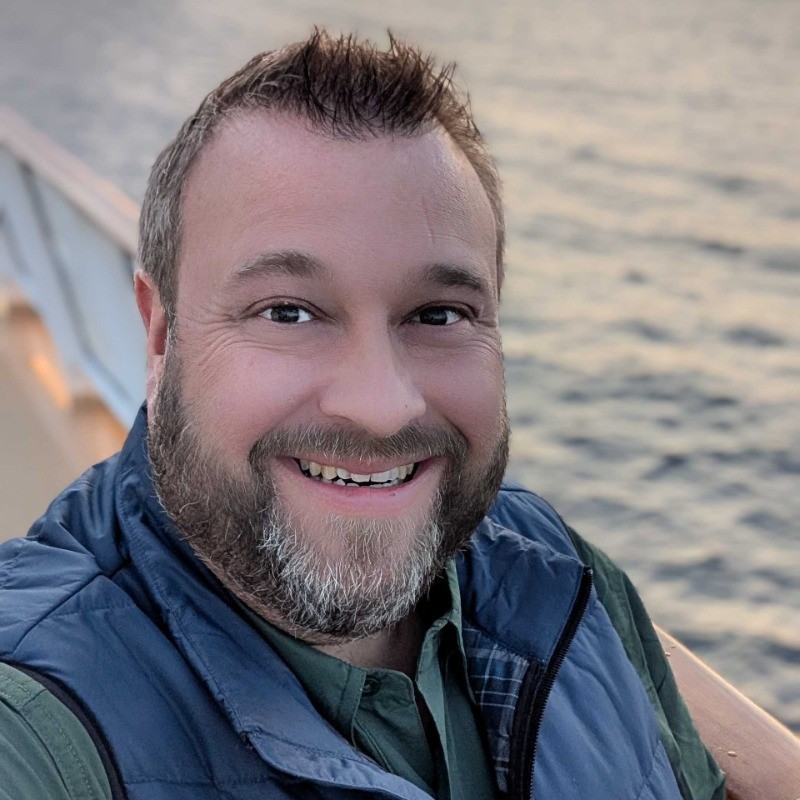
Small Schools, Big Difference: A Primer on Microschools
Small Schools, Big Difference: A Primer on Microschools
Small Schools, Big Difference: A Primer on Microschools
The small school that changed my life looked nothing like a typical school.
I didn't know until my thirties that a church had paid for a large portion of my early education.
I have a learning disability—nothing debilitating, but enough to make traditional classrooms really hard. My mother, a single mom, looked for something different. Then colleagues told her about a private school run by a local church that helped kids with special needs—what today might be called a microschool.
I went. I thrived. That small school changed my trajectory.
Years later, when I was working to help Nevada bring forward the first universal education savings account in the country, I was fighting for other families to have the choices my mother had found for me. The courts shut it down in 2015 before a single family could use it.
But over the past decade, I've watched something bigger than any policy win emerge—a grassroots movement reshaping how millions of families think about education. And microschools are at the center of it.
What Is a Microschool?
At its most basic, a microschool is a small, intentionally-designed learning environment—typically serving between 5 and 150 students, with a median of 16 students.
But size may be the least interesting thing about them.
Part-time schedules are common. Most microschools meet 2-3 days per week. This isn't "partial" education—it's intentional design recognizing that learning happens everywhere, not just during designated school hours. Families can keep their kids connected to neighborhood activities, sports teams, or other programs while accessing high-quality, structured learning environments.
Mixed-age groupings are by design. A microschool might have 4-year-olds learning alongside 12-year-olds. Age mixing creates natural mentorship and removes artificial pressure to keep everyone moving at the same pace.
Facilitators or guides instead of traditional teachers. Microschools often embrace the "guide on the side" rather than the "sage on the stage." Adult guides facilitate learning, ask questions, and help students find answers rather than delivering lessons from the front. At Prenda, the nation's largest microschool network, about half their guides are parents without teaching credentials.
Each serves a specific community or philosophy. Rather than trying to be all things to all people, microschools tend to have distinct identities—nature-based learning, classical education, project-based learning, or serving twice-exceptional students.
Legally, most operate as independent study programs, learning centers, or enrichment programs rather than traditional schools. This allows them to serve families with more flexibility and less red tape.
Why Now?
There are very few times in American history where everyone experienced the exact same pain point at the exact same time.
Even 9/11, which sparked amazing patriotism across America, felt vastly different if you were in New York or Washington versus watching it unfold on the Today Show from somewhere else.
But during COVID, almost every parent in America experienced the exact same school closures for two weeks... then two months... then longer. "Zoom school" wasn't working. Kids were struggling. Parents were drowning. And suddenly, millions of families who'd never questioned their local school were asking: "Is there another way?"
We might call it the "Great Education Migration." It started during COVID, but it hasn't stopped. My friend Kerry McDonald, a leading voice in the microschooling movement, notes: "Early microschool classes—kindergarten and first grade—are now filling with students who've never been in a conventional classroom. These are parents choosing unconventional education right out of the gate."
Today, there are as many students attending microschools as there are enrolled in Catholic schools—roughly 1.5 million students spread out across 95,000 microschools nationwide.
How It Happened: The Nevada Story
My home state shows exactly how this grassroots movement unfolded—and why it succeeded where top-down policy failed.
Nevada was supposed to be the universal school choice story. In 2015, legislators passed the nation's first universal education savings account. Then the Nevada Supreme Court blocked the funding mechanism before a single family could use it.
But that policy failure created space for something different. Don Soifer, a longtime education reformer, and his now-wife Ashley didn't pack up and go home.
"We started hearing from different folks saying, 'Hey, I'd really like to start a microschool. Can you help me?'" Ashley recalls. What began as a one-off project became a hub supporting over 20 schools across Nevada.
North Las Vegas partnered with Don’s organization, Nevada Action for School Options, to run microschools in rec centers and libraries. The city provided space, meals, and IT support. The nonprofit provided the teaching model and facilitators.
Their organization evolved into the National Microschooling Center in 2020 as a pandemic response partnership with North Las Vegas city leadership.
One of those partnerships happened at the Martin Luther King Jr. Senior Center. A thriving community hub with unused space during school hours. The nonprofit provided the teaching model. Kids show up in the morning, work through self-paced curriculum on tablets, break for lunch provided by the city, then spend afternoons on projects, field trips, and social activities.
The city isn't running the school. The school isn't competing with the district. It's just filling a need. Creating an option where one didn't exist. And the kids who attend? Most were already struggling in traditional settings.
Three-quarters of students arrived two or more grade levels behind. The program delivered 125% academic growth compared to typical gains. The all-in cost? Between one-quarter and one-third of the district's per-pupil spending.
I've called Nevada "the perfect storm"—families needing change, innovative educators, and a regulatory environment that made it possible. But it's also something more: a perfect example of how new models emerge when we move beyond partisan debates. The language of open education and public-private partnerships proved more inclusive and pragmatic than traditional battle lines. When we stop arguing about labels and start solving problems, innovation happens.
And the solutions taking shape across the country look remarkably different from each other—which is exactly the point.
The Diversity of Models
What makes the microschool landscape so compelling is its diversity. There's no single "microschool model"—there are dozens of approaches, each serving different families and philosophies.
Acton Academy, with over 300 schools globally, pioneered a distinctive approach. Students work on long-term projects called "quests"—deep dives lasting 5-7 weeks on topics like entrepreneurship, robotics, or filmmaking. There are no grades, ever. The classroom is organized as a "studio" where learners take different roles. Adults function as Socratic guides, asking questions rather than providing answers. A 12-year-old might spend mornings on adaptive math software, then afternoons building a business or studying the Roman Empire through primary sources.
At Primer microschools, students spend 100 minutes each on math and reading each morning, working toward individualized five-week goals. Afternoons are for "earnest work"—passion projects where students design apps, start podcasts, or build businesses.
At SKOLA in Minnesota, three hours of daily outdoor time isn't just recess—it's where real learning happens.
Eleyah Knight runs Connected Teens in Oregon, a van-based microschool where the van is the classroom. Her philosophy centers on holistic health over early career tracking. "If you address holistic health while they're young, they won't end up in their 30s with chronic diseases, wondering what happened to their childhood."
The landscape is remarkably diverse: Montessori microschools bring child-led learning to small settings. Sudbury schools feature self-directed learning. Special needs microschools serve twice-exceptional and neurodivergent students. Faith-based microschools integrate religious instruction. Classical microschools teach Latin and great books. Hybrid models combine online curriculum with in-person facilitation. Farm and orchard-based microschools use agricultural land as the learning context.
Do Kids Actually Learn?
Many people assume that "different" means "lower standards." It doesn't. In fact, the data suggests the opposite.
If this sounds loosey-goosey, here's what matters: many microschools don't position themselves as the sole source of academics. They recognize that core skills can often be delivered efficiently through online platforms or brief instruction—freeing in-person time for what humans do best: complex play, creative projects, mentorship, and community building.
Prenda students show 18 percentage point increases in grade-level proficiency in both math and reading. Students' intrinsic motivation jumps from 27% to 62%. Positive feelings about school leap from 36% to 86%.
Across microschools generally, 76% of parents report being "very satisfied," compared to just 42% for traditional schools (a 25-year low).
The data is admittedly limited—when you're not standardizing education, you're not standardizing measurement. The RAND Corporation's 2025 study acknowledges both the promise and the challenge: outcomes data remains "unavailable, inconsistent, or unrepresentive." Quality varies dramatically across microschools.
But what the data can't capture is what I see when I visit these spaces: kids who actually want to be there. Parents who feel heard. Families who've found something that works—not perfectly, but better than what they had before.
Finding and Joining a Microschool
Finding a microschool isn't like finding a traditional school—there's no district boundary or central directory. But the search is increasingly accessible.
Start local and specific. Search "[your city] microschool" and "[your city] learning pod." Check the National Microschooling Center's directory. Join state and local homeschool Facebook groups, where many microschools market.
Ask the right questions. Instead of "What's your curriculum?" ask "How do you handle kids at different levels?" Instead of "What's your teacher-student ratio?" ask "How do you handle conflicts?" Instead of "What are your test scores?" ask "What does a typical day look like?"
Visit during regular school hours, not just polished open houses. Trust your gut.
Focus on values alignment. What matters most? Religious or secular? Nature-based or academic? Structured or child-led? Two days or four?
Costs typically range from $2,000-15,000 annually, though many offer sliding scale pricing and scholarships. In some states, support from programs that provide educational funding can make microschools more financially accessible.
Starting Your Own Microschool
The support infrastructure for starting a microschool has grown significantly.
The National Microschooling Center offers resources and networking without requiring you to adopt a specific model. They provide research, directory services, and connections to state incubators in places like Mississippi and Indiana that offer startup support and coaching. It's a valuable starting point for understanding the landscape and exploring different approaches.
Prenda provides one of the most comprehensive models. Founded by Kelly Smith (an MIT-trained engineer who started with seven kids around his kitchen table), Prenda has helped over 1,000 adults start microschools serving nearly 10,000 students. The model provides complete curriculum, training, and ongoing support—no education degree required. The program is built around four "modes" of learning each day: Connect Mode, Conquer Mode, Collaborate Mode, and Create Mode. Prenda handles the curriculum, learning management system, and guide training, letting you focus on creating a joyful learning environment. Guides typically run microschools of 5-10 students, 3-4 days per week.
Dalena Wallace, a Kansas homeschooler-turned-microschooler and mother of six, had been homeschooling her kids when she realized, "This is hard. I need community."
She opened a Prenda microschool in her home with three families. Within months, she had 16.
Wallace captured what this shift meant: "We've realized we don't have to have traditional private school options. They don't have to be so expensive. They don't have to be five days a week. They don't have to be in a traditional brick and mortar school."
Wallace went on to found Wichita Innovative Schools and Educators (WISE), as well as the AIM Educational Collaborative, which aims to help other parents do what she did.
Primer takes a project-based approach where students spend mornings on core academics through personalized learning software, then afternoons on "earnest work"—passion projects where they design apps, start podcasts, or build businesses. Primer provides the full curriculum framework and guide training for schools that want to emphasize student agency and real-world application.
KaiPod Learning pairs online learning with in-person coaching. Rather than providing curriculum, KaiPod lets families choose their own while offering community and support. Through their Catalyst program, they've increased the success rate of aspiring founders from 10% to 60%. As founder Amar Kumar explains: "Sometimes just inertia gets in the way."
Education Innovators, founded by Jon England, empowers teachers to create their dream schools. After 14 years as a public school teacher and principal, England now supports educators in launching microschools where students excel and teachers rediscover their passion. The organization offers school launch guidance, fosters peer networks for innovators, and advocates for policies to eliminate barriers. England has supported over 100 schools, mentored 20+ founders, and leads a mastermind group for school growth.
A minimum viable microschool typically needs 8-12 committed families, a part-time schedule of 2-3 days weekly, and a space to meet(often leased inexpensively from a church or community center) rather than a permanent facility.
The psychological hurdle is often bigger than the logistical one. Letting go of what school "should" look like takes courage. The permission you're really seeking isn't from the state—it's from yourself.
Your Next Step
If you're considering a microschool, start by identifying your non-negotiables. Research local options. Visit during regular hours. Talk to current families. Consider starting part-time.
Most importantly: remember that you're not abandoning everything else. You're not declaring war on your local school or your homeschool co-op or whatever else is working. You're just adding what's missing.
The microschool landscape is diverse, growing, and increasingly accessible. Whether you're drawn to nature-based learning, classical academics, project-based approaches, or something else entirely, there's likely a model that aligns with your family's values.
The question isn't whether you'll "choose microschooling" or stay in traditional school. The question is: what's the right mix for your family, right now?
Take what you need. Leave what doesn't serve you. Build the educational approach that works for your family.
That's open education.
Subscribe to The OpenEd Daily
Join 20,000+ families receiving curated content to support personalized learning, every school day.
.webp)



.png)
.png)
